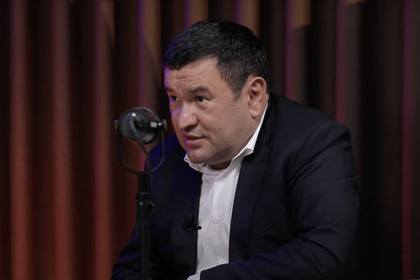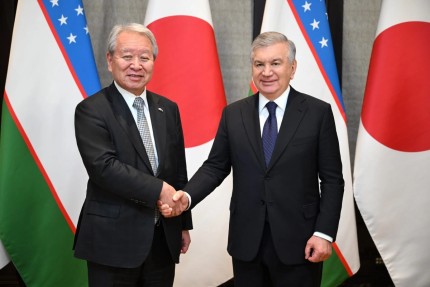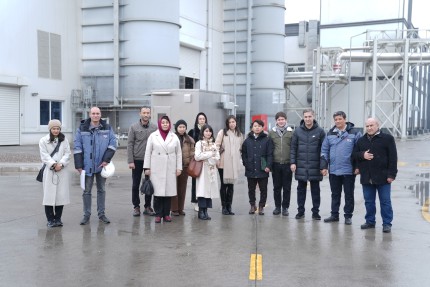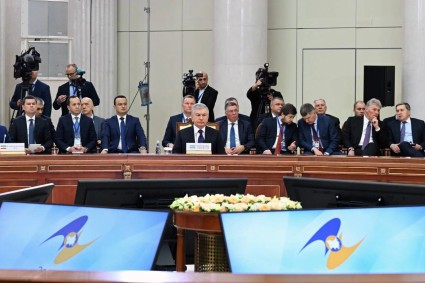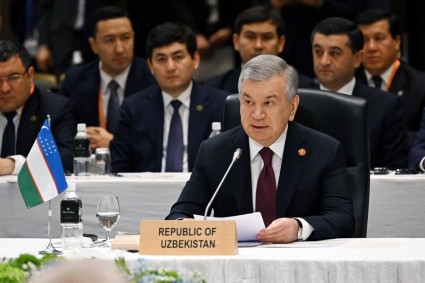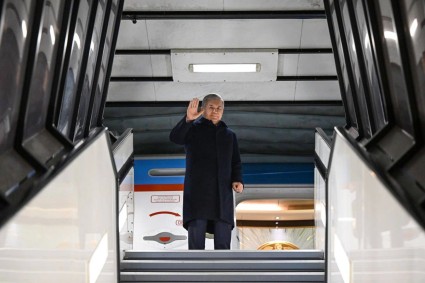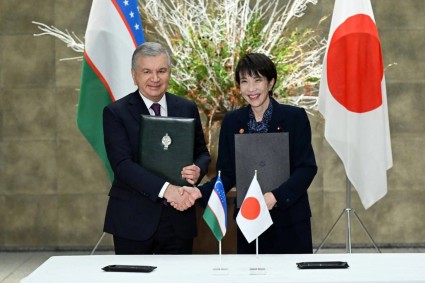Large-scale nuclear power plant project in Uzbekistan is on the table despite the expected start of construction of a small-scale nuclear power plant. This was announced in the Lolazor podcast by Energy Minister Jurabek Mirzamakhmudov.
The Minister of Energy was asked what share of the country's energy balance in 2030 will be generated by a small nuclear power plant (SNPP) with a capacity of 330 MW (six reactors with a capacity of 55 MW each), which will be built by the Russian company Atomstroyexport (an engineering division of Rosatom).
"This plant will have almost no impact on the overall capacity. Why do we want to start with a small reactor first? We need to train specialists for small reactors, but [in the future] we will still need a large reactor. By 2030, we plan to increase the share of renewable energy to 40% and reach 20 GW. It was not by chance that I spoke about sharp fluctuations in the weather. When there is no sun and wind, base generation is required. Base generation is thermal power plants (gas, coal) and hydroelectric power plants. Our goal is to build a large nuclear power plant in the future,” the minister replied.
According to him, the capacity of a small-scale nuclear power plant of 330 MW will be almost equal to 5 GW of energy obtained from renewable sources. This is due to the fact that renewable sources operate for about 1,800 hours a year, while a nuclear power plant is guaranteed to operate for 8,000 hours. The capacity utilization factor at thermal power plants and nuclear power plants is above 90%, while for renewable sources this figure is 20-25%.
Zhurabek Mirzamakhmudov emphasized that the construction of a small nuclear power plant is still at the design stage. The recommendations of the International Atomic Energy Agency (IAEA) are used in the process of building the nuclear power plant; two missions of the agency have already been conducted to verify the suitability of the selected site in Uzbekistan.
“The IAEA inspected the site and confirmed its compliance with the requirements. Now we are moving on to the next stage. The site has been selected, and now a feasibility study is being developed, after which the cost of the project will be determined,” he said.
When asked whether the Uzbek authorities know how much the project will cost, the minister replied: “Provisional estimates have already been made, and the project has been launched based on them. When the feasibility study is ready, everything will become clear.”
The minister also commented on the openness of data on the cost of building NPPs in other countries.
“It is necessary to understand that the background in different countries are different. Hungary has one set of conditions, Turkey has another, Belarus and Bangladesh have their own systems. For example, a NPP requires a cooling system. In Hungary, they use water from the Danube for this, which is returned back to the river. Turkey and Egypt have their own peculiarities,” he said.
Mirzamakhmudov also underscored that the cost of electricity within the framework of the project will be announced after the feasibility study is completed. In addition, he answered a question about the timing of the construction of a small NPP.
“Why did I mention the IAEA? Because the agency’s mission participated in the selection of the site. Before construction can begin, it is necessary to go through the licensing process. In some countries, it takes two years, in others, one. That is, the construction of any NPP begins only after receiving a license from the relevant committee, which is then checked by the IAEA. The construction process itself takes 60 months. But the most difficult part is preparation, design and approvals. For example, for a thermal power plant, this process takes 36-48 months, and for a small NPP - 60-69 months," he explained.
To a question about whether it is possible to build a large-scale NPP in Uzbekistan by 2040, the minister answered: "Of course."
"We are striving to achieve carbon neutrality by 2050, and this cannot be achieved without NPPs. The United States has revised its program. In the world, America has the most reactors - 99 units. Europe, Korea, Japan have also resumed their programs. The whole world is moving in this direction," concluded Zhurabek Mirzamakhmudov.

